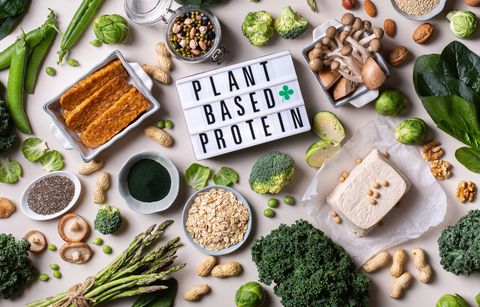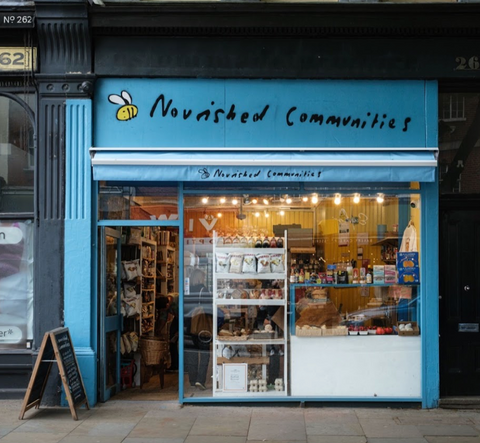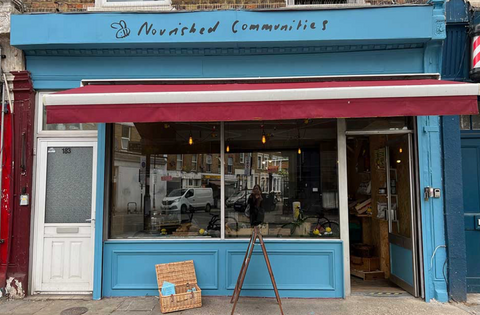Navigating the world of gluten-free eating can feel overwhelming at first, especially when it seems like gluten is lurking in so many foods. Whether you’re new to a gluten-free diet or simply curious about what it entails, this guide will break it down for you, answering key questions and demystifying gluten-free living in a way that’s easy to digest (pun intended).
Discover our range of gluten free products online or in-store at Nourished Communities.
What Does Gluten-Free Mean?
A gluten-free diet is one that excludes all forms of gluten, a protein found in wheat, barley, and rye. Gluten is what gives bread its elastic texture and helps it rise, making it an integral part of many baked goods. But for some, consuming gluten can cause a range of issues, from mild discomfort to serious health concerns.
For people with celiac disease, an autoimmune disorder, even small amounts of gluten trigger an immune response that damages the small intestine. This can lead to digestive problems, malabsorption of nutrients, and long-term health issues. Others may experience gluten sensitivity or wheat allergy, which can cause symptoms like bloating, fatigue, and headaches without the immune system attacking the intestines.
Gluten-free eating is also becoming popular beyond medical necessity, as many people find they feel better overall when they avoid gluten.
Naturally Gluten-Free Foods
The good news is that there are plenty of naturally gluten-free foods. These foods are not only free from gluten but are also typically rich in nutrients, making them excellent staples for a balanced diet.
- Fruits and Vegetables
All fresh fruits and vegetables are gluten-free, making them a crucial part of the diet. From leafy greens like spinach and kale to berries, apples, and citrus fruits, the produce section of your grocery store is a safe zone. These foods are also rich in vitamins, minerals, and fibre, making them a win for your overall health.
Tip: If you're buying pre-packaged or canned fruits and vegetables, always check the label. Some may have added sauces or seasonings that contain gluten.

- Proteins
Most unprocessed proteins are gluten-free. This includes:
- Fresh meat (beef, chicken, pork, lamb)
- Fish and seafood
- Eggs
- Tofu and tempeh
- Beans and legumes
Again, be cautious of processed or marinated meats, as they can sometimes contain gluten. Stick with fresh, whole ingredients whenever possible.
- Dairy Products
Pure dairy products like milk, cheese, yoghurt, and butter are naturally gluten-free. However, some flavoured or processed dairy products may contain gluten as a thickener or stabiliser. If you're unsure, check the ingredient list for hidden gluten sources.
- Gluten-Free Grains
Grains might seem tricky since wheat, barley, and rye are off the table, but there are plenty of gluten-free grains to enjoy. Some of the most popular include:
- Rice: A versatile, naturally gluten-free grain that works as a side dish or main component of many meals.
- Quinoa: Packed with protein and fibre, quinoa is a great gluten-free alternative to wheat-based grains.
- Millet: A small, seed-like grain that’s perfect in salads or as a side dish.
- Amaranth: A lesser-known ancient grain that’s naturally gluten-free and rich in nutrients.
- Buckwheat: Despite its name, buckwheat is gluten-free and commonly used in pancakes, noodles, and porridge.
- Corn: Both corn and cornmeal are gluten-free and can be used in a variety of dishes, from tortillas to polenta.

- Nuts and Seeds
Nuts and seeds are naturally gluten-free and are a great way to add crunch, flavour, and healthy fats to your meals. Almonds, chia seeds, flaxseeds, and sunflower seeds are just a few examples of gluten-free snacks that pack a nutritional punch.
Why not take a look at our gluten-free products? With lots of different tasty options to choose from.
Processed Gluten-Free Foods
In addition to naturally gluten-free foods, there is a growing market for processed gluten-free products. These are often convenient, but it’s important to approach them with caution.
Many gluten-free versions of bread, pasta, crackers, and baked goods are available in grocery stores today, but not all are created equal. While they may be free from gluten, some can be highly processed and loaded with sugar or unhealthy fats. When shopping for gluten-free packaged foods, look for those that are made with whole, simple ingredients and minimal additives.
Foods That Contain Gluten
To stick to a gluten-free diet, it’s crucial to know which foods commonly contain gluten. Some are obvious, while others are surprising.
- Wheat-Based Products
Any food made from wheat flour will contain gluten. This includes most breads, pastas, pastries, and baked goods. Be sure to avoid common wheat-based products like:
- White, whole wheat, and multigrain bread
- Regular pasta and noodles
- Muffins, cookies, and cakes
- Crackers and biscuits
Nourished have great gluten-free alternatives to your regular pasta, bread and crackers.
- Barley and Rye
Barley and rye are less common than wheat but are still found in a variety of products, including:
- Beer (unless it’s specifically gluten-free)
- Malt (found in malt vinegar and some cereals)
- Rye bread and crackers
- Condiments and Sauces
Many condiments and sauces contain gluten as a thickening agent. Soy sauce, for example, is often made with wheat, and gravies, salad dressings, and marinades may also contain gluten. Always check the label, or opt for naturally gluten-free alternatives like tamari (a gluten-free soy sauce) or homemade dressings.
Is Sourdough Gluten-Free?
Sourdough bread is known for its distinct tangy flavour and chewy texture, thanks to the fermentation process. While fermentation breaks down some of the gluten proteins, sourdough made from traditional wheat flour is not gluten-free.
However, there are gluten-free versions of sourdough bread made with alternative flour like rice, almond, or sorghum. If you’re following a gluten-free diet and craving the taste of sourdough, be sure to find one that’s specifically labelled gluten-free. Discover our delicious range of organic sourdough, including an organic and gluten-free seeded loaf.
It’s worth noting that some people with gluten sensitivity may tolerate traditional sourdough better than regular wheat bread due to the fermentation process, but this is not the case for those with celiac disease. If you have celiac disease, it's crucial to stick to certified gluten-free products.
Things to think about
A gluten-free diet doesn’t have to be restrictive or bland. From fresh fruits and vegetables to a wide variety of naturally gluten-free grains and proteins, there’s a world of delicious, nutritious options to explore. While some foods contain hidden gluten, being mindful of labels and sticking with whole, minimally processed foods can make gluten-free eating both enjoyable and healthy.
And remember, not all bread is off the table! If you love the taste of sourdough, seek out gluten-free alternatives that let you enjoy this staple without compromising your health. Whether you’re gluten-free for medical reasons or simply because it makes you feel better, the key is finding balance and joy in the foods you eat.
With so many options available, living gluten-free is more than doable—it can be a delicious adventure in its own right.
For more insight into gluten-free living and locally sourced gluten-free products, check out Nourished Communities for a curated selection of wholesome, sustainable options.









Comments (0)
There are no comments for this article. Be the first one to leave a message!